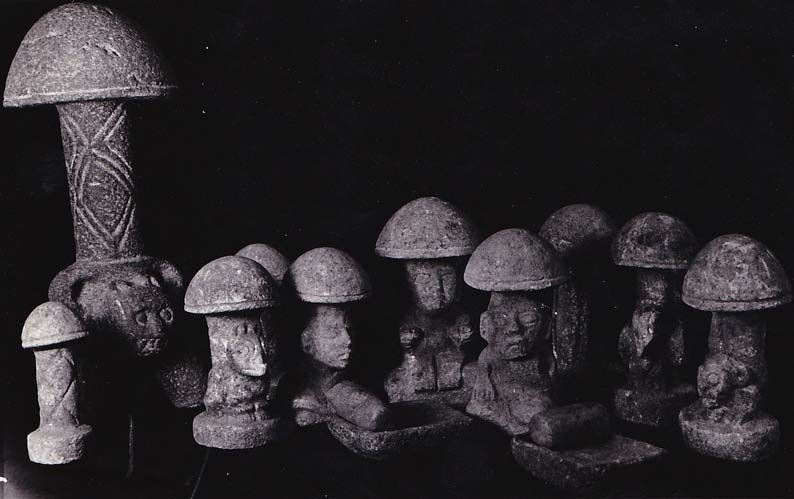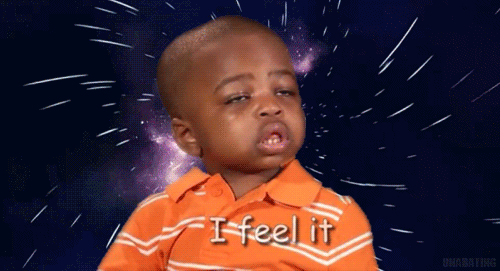I made it onto the nation’s airwaves the other day.
I had some things to say that needed saying. In my moment of glory I glossed over coronavirus and the size of Chris Witty’s collar, avoided mention of the Oprah interview and went straight for the jugular. Talked about the most important thing I could think of. Mark (if that’s your real name bro) had called in saying he thought this was LBC’s most boring phone-in ever, and I was having none of it.
Psychedelic substances are the talk of the town.
Micro-dosing tech wizards in California, Ayahuasca ceremonies in East Anglia, psilocybin clinical trials for the treatment of addiction and depression, the psychedelic revolution that was shut down in the 60s has come back for round two. But what exactly are these things. And why do they even exist. For my money, psychedelics pose the most important questions of all, ones we simply have no answer to.
*
Peterson looks deadly seriously at his interviewer:
What we don’t understand about psychedelics is a very thick book. They bend the structure of reality. I have no idea what they do. They could be anything. They are unbelievably strange. What they reveal to me is how little we know about everything, and that’s a terrifying thing.
Something to be investigated further?
With great risk.
A couple shroomz on a hill at sunset, what’s so terrifying about that bruh. In small doses psychedelics can bring on a feeling of calm and connectedness, can amplify colour and sound, can give you hysterics, some profound and beautiful insights, none of which would seem overly terrifying. But you could call this tickling the feet of the sleeping giant. Those most familiar with these substances, the tribes of the Amazon, the Gnostics, the Ancient Egyptians among others, deemed them to be anything but recreational, and to be taken only in very specific circumstances.
The crux of it all, is the size of the dose.
In high doses, psychedelics bring about effects in the brain and changes in consciousness so grandiose and total that they are deemed by their subjects as among the top three most meaningful experiences of their lives. They are experiences that can bring about extreme self-realisation, can heal past trauma and alter the course of lives. But these experiences can also be extremely challenging, and if not taken in the right circumstances are so powerful they can be dangerous. Put simply, the brain does not know what to do with them.
What they put us in touch with is the mystery. Their effect has been described as drawing back the curtain, so we can experience what lies ‘beyond the veil’.
In the famous words of William Blake:
If the doors of perception were cleansed every thing would appear to man as it is, Infinite. For man has closed himself up, till he sees all things thro’ narrow chinks of his cavern.
On the walls of caverns from Indonesia to Périgord lying in long forgotten darkness for millennia, prehistoric cave-art show the presence of shamanic transformation, of therianthropic half-men half-beasts, and point to mounting evidence that mankind’s relationship with these substances goes back to the dawn of man itself.
From the Amazonian Tribes who knew inexplicably to combine a leaf with a vine from 150,000 plant species in order to make the Ayahuasca brew and when asked how, they replied simply ‘the plants told us’. To the Bwiti people from Gabon who ingest the Iboga root and use it to contact the dead. To the Vedic texts from ancient India and their talk of Soma, a drink made from the Amanita Muscaria mushroom, to the Mayans and their veneration of psilocybin and the mushroom stones carved in their honour.
In Ancient Greece, Eleusis was known as the light of the ancient world. ‘Athens has given nothing to the world more excellent or divine than the Eleusinian mysteries’, wrote Cicero. Plato, Aristotle, Sophocles, they all went down into the great subterranean hall, the Telestrion, to drink from a brew called the Kykeon, and reported experiences that transformed their lives and removed their fear of death.

Used the world over by different cultures throughout time, pyschedelics are now known to have been responsible for the birth of religions and profound leaps in cultural evolution. Some posit the Book of Revelation is an account of one long psilocybin trip. There is even mention of mushrooms in the Bible . I dug it out and found in Exodus 16:12 a description of man-na.
In the morning ye shall be filled with bread; and ye shall know that I am The Lord your God. And when the dew that lay was gone up, behold, upon the face of the wilderness there lay a small round thing, as small as the hoar frost on the ground. And when the children of Israel saw it, they said one to another, it is man-na: for they wist not it was. And Moses said unto them, this is the bread which the Lord hath given you to eat.
*
They are a tool, said the shaman, when I asked him what the hell it all meant. But what does it mean, I kept saying. The previous evening I’d drunk Ayahuasca for the first time and was sitting in a cabin in a wood in Holland with questions teeming inside me that I wanted answers to.
They are an endless library, he said. On thousands of journeys, every time a different book is presented to me. Sometimes I am shown the womb, sometimes an electron moving around a proton, sometimes the outer reaches of the universe, sometimes the dark corners of my past. They are a tool to help us live better.
But his explanation didn’t cut it. This wasn’t answering my question. The world made enough sense as it was, without these mysterious plants or fungi hanging around positing enormous question-marks about the make-up of everything. Why did they exist at all. A tool? If you want to get to an island and you’re not Michael Phelps, odds on you’re going to need a boat to get there. But this didn’t tell me what the hell the island was doing there. According to him these things enabled us to garner learning to help us orient ourselves in the world. Fine, but where did this learning come from. What on earth was this place.
Was it even on earth at all.
The neurochemistry is in.
Psychedelics light up something in the brain called the Default Mode Network. When this is switched on, multiple brain regions are able to interact with each other simultaneously. Brain scans show that most of our neural activity is expended in containment rather than letting things run free. Aldous Huxley called the brain a ‘reducing valve’ and psychedelics ‘gratuitous graces’ provided by nature to allow us to bypass it, in order to see what our brains prevent us from seeing in our normal waking lives.
But it’s still the brain though, barks a defiant Dawkins, when asked what psychedelics reveal about the nature of consciousness.
Fifteen years of DMT research would suggest otherwise. Rick Strassman a psychiatric professor at the University of New Mexico administered dimethyltryptamine to volunteers in clinical trials over a fifteen year period and grew so uncomfortable with his findings he brought the trials to a close. The volunteers all reported the same experience. Being shot out of their bodies like a rocket into worlds of such intense detail that words fall short of describing them, where they encountered entities, some of whom were happy they had been found.
This has given rise to the idea that, contrary to what Dawkins believes, consciousness might reside outside our brains, and that we are more like receivers tuning into a radio frequency. ‘We have absolutely no proof consciousness is generated in the brain: this is the great lesson of psychedelics,’ wrote the Czech psychiatrist Stanislav Grof. What if these medicines allow us to access dimensions we are normally unable to reach, tuning us into new frequencies, permitting us to see beyond the veil of our bandwidth.
Rather than being aware of their hallucinating brain, the DMT subjects reported their experiences to be ‘more real than reality itself’. Their accounts were mystifyingly similar, as if they were all journeying to the same place. But Strassman grew disenchanted with his inability to prove scientifically what these accounts seemed to be revealing, and in the end could only conclude he was in the presence of what he called a spiritual phenomenon.
Whatever room these substances swing a creaking door open to, there is no assurance the human brain can deal with what lurks therein. Maybe evolution has kept the door locked for a reason. In a letter to a friend on the subject of mescaline, Carl Jung warned of Goethe’s poem Der Zauberlehrling the sorcerer’s apprentice, who knew how to summon the ghosts but not how to get rid of them. What one has seen, one cannot then unsee. Jung insisted on being on our guard against ‘wisdom we have not earned’.
This is why Peterson spoke of great risk, and why psychedelics must come with a warning. There is no knowing what resides in the dark corners of the world, what forces are at play there, and what exposure to these things might do to a mind unprepared for it. The interviewer furrows his brow…
Maybe a way to get in touch with the dark side?
Yes… or for the dark side to get in touch with you.
But native cultures saw them as sacred medicines for good reason.
Imagine your mind is a snow-covered hill, wrote a Dutch scientist, and your thoughts are sleds moving down the hillside. The older you get the deeper the grooves in the snow become, until you reach a point where all your thoughts end up following these pre-set grooves all the way down. Psychedelics are a fresh dump of powder. All of a sudden the sleds are able to run free, to move where they want, this way and that, finding all sorts of new ways down, just as the mind can think in new ways denied to it for years, sometimes a whole lifetime.
My experience with Ayahuasca showed me myself in a way I had never seen. I was shown myself walking into a pub, and from a corner incognito I sat and studied myself interacting with people. This was how others saw me, I realised, as I was, rather than through the lens of my relentless self-criticism. I was curious, engaged, quick to laugh, vulnerable, I was alright, I thought. I’m alright.
I often forget that vision and version of myself, floundering in the muck of bad days and regret when I am no friend to myself, but somewhere in me is the understanding that what I saw was the truth, and I must hold onto it. To not forget what was shown to me and to uphold it as an antidote in the unforgiving hours of muted afternoons. If I look hard enough the idol within me is still flickering.
The shaman was right after all. The question I was asking, what does it all mean, had no answer. Once back from these journeys of the mind, the only reality we inhabit is the shared reality in front of our faces, and the learning and self-knowledge can be put into practice only right here, right now. In this way, they can only be tools.
And still the question remains. Why should plants have this kind of intelligence, why should they contain messenger molecules capable of interacting with the human brain to cause such extreme life changing journeys of thought and perception. Could the earth know we are in danger and be trying to get a message to us, the problematic apes, to say wake up.
The modern day shamans of the Amazon believe our world has severed its connection to spirit. That despite our intelligence and civilisation, we are missing out on ancient signals from the earth, messages from the natural world that we are no longer picking up, as if the earth is speaking to us. What if, in the 10,000 years of history and culture and the dawn of modern man, our connection to spirit has been cut. And our unhappiness, our neurosis, our sickness, have moved in to take its place. This might explain the residue left over, why we now sit with our spiritual yearnings and our nostalgia for a paradise lost.
Could the answer lie in a return to the past, to the Shamanic traditions of the Amazon that have been preserved by the jungle itself, ready for us to find again this lost way of seeing, and recover once more our connection to spirit, to the divine inside us.
The Swiss Chemist Albert Hoffman who discovered LSD and lived til the age of 102, would take tiny quantities of acid and go wandering around his garden in the early morning. In conversations with his friend Stanislav Grof, he said:
I see the hand of God there. If they think this is just the work of atoms, they don’t know what they are talking about.
If the doors of perception were cleansed, every thing would appear to man as it is, Infinite. These substances, whatever they are, bring about a sense of connection to the universe far beyond the narrow band of our consciousness. Allowing us to peer deeply into ourselves, demanding our humility to acknowledge how little we understand, beckoning to us to reach with arms outstretched to touch the transcendent, as we behold the miracle and mystery of all things.






